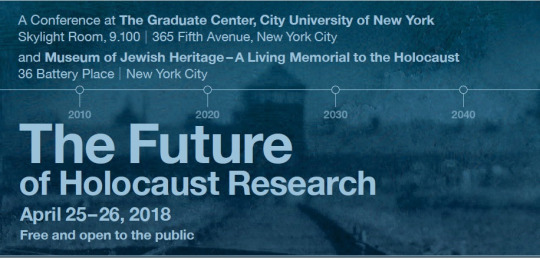Text
Tree of Life
We at the American Jewish Historical Society are heartbroken by the loss of the 11 lives in Pittsburgh. There are no words to describe the horror of today—that those gathered for Sabbath morning services would become the victims of a hate crime.
The AJHS archives are filled with the work of Jews who organized to fight anti-Semitism. They are likewise filled with the stories of the Jews of Pittsburgh—how they established and organized settlement houses, synagogues, community centers, immigrant aid societies, and business associations. These stories inspire us to fight for America’s ideals, for its freedom of religion, its diversity and pluralism. They also inspire us to build communities that reflect these ideals.
We stand with the congregation Tree of Life, the Jewish community of Pittsburgh, and all Americans who cherish the great ideals of this country and the freedom of a congregation to pray in peace.
7 notes
·
View notes
Text
An Archival Binge Watch
Hello tumblr! Please excuse our long absence! We’re making our exciting return to you with an exciting announcement:
In anticipation of season 2, we will be binge watching the first season of The Marvelous Mrs. Maisel and, episode, by episode, tell you all about what this show and our collections have to say about each other.
Watch these spaces: facebook, twitter, instagram!
17 notes
·
View notes
Text
IT BEGINS: https://twitter.com/AJHSNYC
An Archival Binge Watch
Hello tumblr! Please excuse our long absence! We’re making our exciting return to you with an exciting announcement:
In anticipation of season 2, we will be binge watching the first season of The Marvelous Mrs. Maisel and, episode, by episode, tell you all about what this show and our collections have to say about each other.
Watch these spaces: facebook, twitter, instagram!
17 notes
·
View notes
Photo

The Origins of the Society of American Archivists
By Jessie Kratz | Historian, National Archives
As the Society for American Archivists (SAA) meets for the 82nd annual meeting here in Washington, DC, we’re taking a look back at the origins of the organization. SAA was founded just two years after Congress created the National Archives and came to be, in part, because the efforts of National Archives staff.
The nation’s first association of archivists was the Public Archives Commission of the American Historical Association (AHA). It was established 1899 and held its first conference in 1909 in conjunction with AHA’s annual meeting. But, by the time the National Archives was created in 1934, the commission had largely disbanded.
The following year, first Archivist of the United States R.D.W. Connor, with the help of the National Archives Director of Publications, Solon Buck, organized a program on the need for an archival organization for AHA’s 1935 annual meeting.
The group met in Chattanooga, TN, in December 1935. The discussion began with a presentation by Theodore C. Blegen, Superintendent of the Minnesota Historical Society, on “Problems of American Archivists.”

Problems included the lack of public records laws at both the state and Federal level; a lack of archival educational resources and opportunities; a lack of classification, cataloging, and description guidelines; and a lack of housing, care, and repair standards for records, among others.
At the end, he recommended a professional association of American archivists be established to help mitigate the problems. The group then discussed establishing such an association and formed a committee of ten, with an executive committee of three, to write a constitution and organize a meeting.
The executive committee included Solon Buck from the National Archives, archival pioneer and Secretary of the American Council on Learned Societies Waldo G. Leland, and Curtis Garrison, Archivist of the Pennsylvania State Library.
Read the entire Prologue blog post.
80 notes
·
View notes
Text
An Archival Binge Watch
Hello tumblr! Please excuse our long absence! We’re making our exciting return to you with an exciting announcement:
In anticipation of season 2, we will be binge watching the first season of The Marvelous Mrs. Maisel and, episode, by episode, tell you all about what this show and our collections have to say about each other.
Watch these spaces: facebook, twitter, instagram!
17 notes
·
View notes
Text
Bayard Rustin
In honor of Juneteenth and Pride, we'd like to introduce you to Bayard Rustin, a prominent civil rights leader, LGBT rights activist, and advocate for Black-Jewish cooperation.
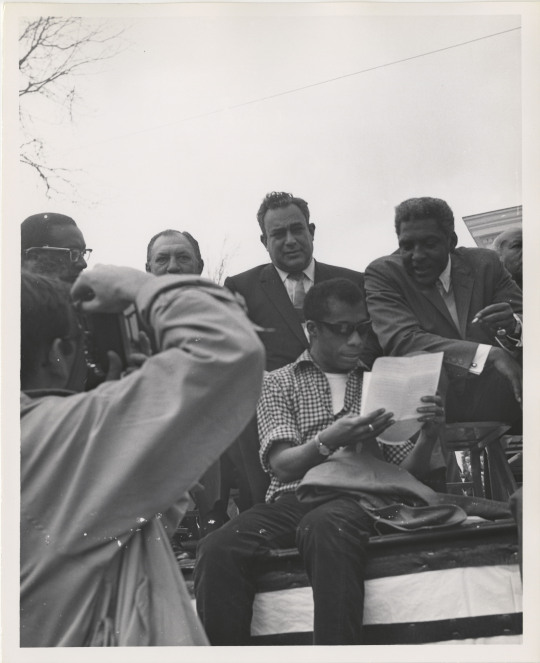
Rustin sits with James Baldwin at the Montgomery March, 1965.
Openly gay in a time when homosexual behavior was criminalized in the US, Rustin remains marginalized in public memory of mid century rights movements.
To learn more about Bayard Rustin, his life, and activism, please see Collection P-1015: the Bayard Rustin Papers at https://bit.ly/2Jg0DUZ .
19 notes
·
View notes
Text
What do I Have to Be?
We're very excited to announce that AJHS Senior Archivist, Tanya Elder, has published an essay titled "What do I Have to Be?" in the volume In Our Own Voices, Redux: the Faces of Librarianship Today, edited by Teresa Y. Neely and Jorge R. Lopez-McKnight.
In this beautiful essay about race and identity, Ms. Elder writes about her experiences coming of age as a light-skinned black woman in 1970s Detroit. She describes how her identities have impacted her career trajectory as an actor, children's librarian, and archivist.
Towards the end she writes:
"Working at the AJHS at the Center for Jewish History (CJH) is unlike working at the Free Library of Philadelphia. Many people assume that everyone who works at the CJH is Jewish or devoutly Jewish. Neither is necessarily true. No one has ever said derogatory things to me because I am not Jewish or because I am Black or light skinned. I don't have to be anything except the archivist, who happens to not be Jewish."
You may find Ms. Elder's essay, and other writings, here: https://amzn.to/2LII2hT
0 notes
Text
In Honor of Lesbian Activist, Connie Kurtz

Kurtz, 1936-2018. She spent over 30 years with her wife, Ruth Berman.
Connie Kurtz died today at the age of 81. In her honor, we've highlighted some of our collections which shed light on the lives and actions of LGBTQ members of the American Jewish Community.
Collection P-979 (https://bit.ly/2smD2s1) contains the Steven Siegel Papers. This collection documents the life and activities of Steven Siegel, co-founder of the Jewish Genealogical Society of New York, and active member of the LGBT community. Siegel served as national coordinator of the Cornell University Gay and Lesbian Alumni Association for 30 years, and he helped found Congregation Beth Simchat Torah, the first synagogue serving the Jewish gay and lesbian community.

Sidney Franklin, 1932
Collection P-1015 (https://bit.ly/2Jg0DUZ ) contains the Bayard Rustin Papers. Rustin pioneered the Soviet Jewry movement, fought for Civil Rights, advocated for Black-Jewish relations and cooperation, and won the American Jewish Congress’ annual Stephen Wise Award. Openly gay in a time when LGBTQ behavior was a criminal act in the US, he was arrested in 1953 for homosexual activity, and served 60 days in jail. In 1982, he adopted his partner, Walter Naegle, in order legally protect their relationship. His openness regarding his sexuality made him a target of segregationist politicians, and opened him to marginalization at the hands of members of the groups he advocated for. As a result of this erasure, historians of the Civil Rights Movement refer to him as a “lost prophet.” In 2013, President Barack Obama posthumously awarded him the Presidential Medal of Freedom, the highest civilian award in the United States. The press release stated: “Bayard Rustin was an unyielding activist for civil rights, dignity, and equality for all.”
Collection P-894 (http://findingaids.cjh.org/?pID=635255) contains the Sidney Franklin Collection. A bff of Ernest Hemingway, this bullfighter from Brooklyn ran away to Mexico after a 1922 fight with his father. He debuted as a bullfighter in 1923. Known as “El Yanqui,” his bullfighting career peaked in the early 1930s, and he retired in 1959. Friends with Hemingway from 1929-1937, he was the subject of Hemingway's Death in the Afternoon. According to his biographer, Bart Paul, Franklin spent his life as a closeted gay man.
5 notes
·
View notes
Photo



“Ten years of teaching Negro girls in Harlem have shown me in how many ways the simple facts of democracy are perverted or forgotten. The simple truth which any child can see is that for the Negro people there is little of the equality and justice which the white man assumes. Despite the enforced low standards which prevail among them, not once in ten years of teaching and observation have I found justification for any claim of white superiority.”
So wrote Virginia Levitt Snitow (1911-2000) in her 1942 essay “I Teach Negro Girls,” originally published in New Republic. Her words demonstrate the challenges faced by black adolescent women in 1940s Harlem as they pursued their education, and the structural inequalities standing between these young women, and educational attainment.
We are excited to share this essay on Teacher Appreciation Week, as teachers across the country continue to fight, agitate, and advocate for the rights and humanity of their students.
You can learn more about this essay and Snitow’s other writings in collection P-876, the Virginia Levitt Snitow Papers: http://findingaids.cjh.org/?pID=525924.
53 notes
·
View notes
Text
That one time Ellis Island detained David Ben-Gurion
Blog post by Susan Woodland, manager of the HIAS Archives Project; original post may be found here.
I spent a few minutes this week looking for information on the Jewish community in Bogota, Colombia in the 1950s for friends whose family migrated from Poland to Paris to Bogota to New York before, during and after WWII. The earliest groups of files in the HIAS collection include some of the surviving files of Dr. Henry Shoskes. Dr. Shoskes was based at the New York office of HIAS in the 1940s and 1950s, but spent months at a time traveling between overseas offices of HIAS. Previous posts on Dr. Shoskes can be found here:
Dr. Henry Shoskes in Latin America, 1947
The Jewish Problem and the Catholic Point of View, Quito, 1946
Your Representatives Just Disappeared from Sao Paolo
When in Shoskes’ folder titled, “Latin America – Memoranda and Reports, 1947-1956”, searching for information on Bogota, a 2-page memorandum caught my attention.
Dated May 9, 1951, the memorandum is from Bernard Kornblith, Supervisor, Pier Service Department, to Dr. Henry Shoskes, HIAS Overseas Representative. The subject is: “Ben Gurion’s arrival in the United States in 1940”. There is no context about why Kornblith chose this moment in 1951 to write to Shoskes about this episode from 11 years earlier. The copy in the file is a carbon copy, which you can see in the lack of crispness in the text.
Note that the ship Ben-Gurion arrived on was the S.S. Scythia – misspelled in the memo – which itself has an interesting history. Below is the memorandum:

David Ben Gurion’s Arrival in the United States, page 1
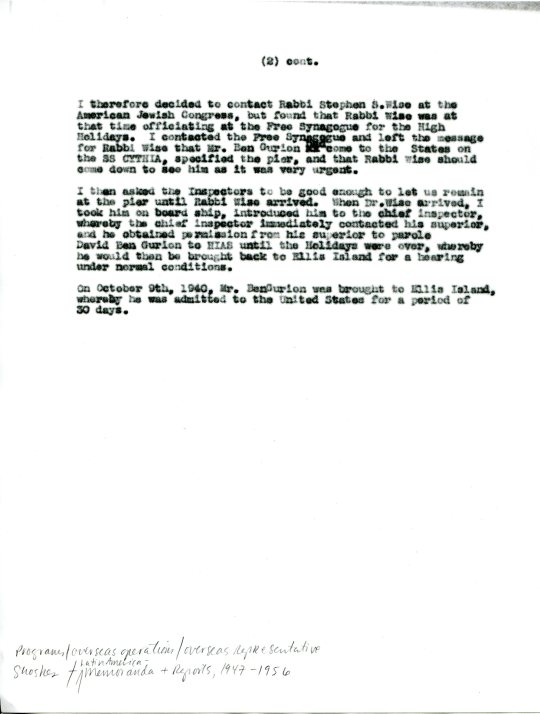
Kornblith memo, page 2
Kornblith must have repeated this story many times; a very similar retelling appears in a new book by Rick Richman, and in his article in Mosaic magazine (January 2018).
It may seem that Kornblith’s responsibilities as the supervisor of HIAS’ pier services on Ellis Island, while offering much-needed assistance to immigrants, most days involved routine paperwork. How surprising therefore, on a Rosh Hashanah morning, to find himself pulling Rabbi Stephen Wise out of High Holiday services. Through Wise’s intervention, the future first prime minister of Israel avoided an uncomfortable couple of days and nights on Ellis Island.
I hope Kornblith was aware of the thousands of new immigrants he helped ease into new lives in the United States in the decades he worked for HIAS, down at the piers.
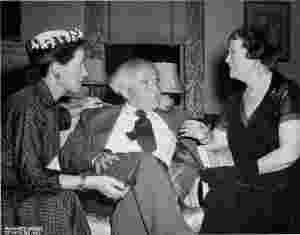
David Ben-Gurion on another pre-state visit to New York. Most likely seeking funding, he is pictured here with Hadassah leaders Rose Halprin (left) and Etta Rosensohn, 1946
2 notes
·
View notes
Photo

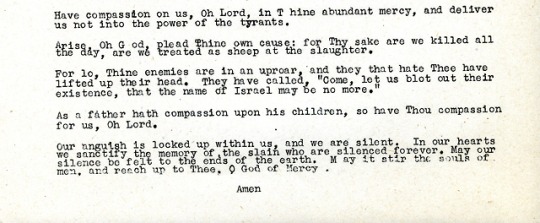
Today is the 75th anniversary of the April 19, 1943 Warsaw Ghetto Uprising. On this day, 750 Jewish fighters, 500 from the Jewish Fighting Organization (the Zydowska Organizacja Bojowa, or ZOB), and 250 the Jewish Military Union (Zydowski Zwiazek Wojskowski, or ZZW) defied approximately 2,054 German soldiers and 36 officers. General Jurgen Stroop led the suppression of the Uprising, yet, armed Jews were still found in the ruins of the ghetto as late as October, 1943.
One year later, before the war was over, before the Holocaust was over, the Synagogue Council of America had put together a prayer service for those who perished fighting for their agency and humanity. This document from Collection I-68, Synagogue Council of America Records, Box 37, Folder 3.
2 notes
·
View notes
Text
American Jewish History and...Ivanhoe?
What does Sir Walter Scott’s Ivanhoe, published in 1820, have to do with American Jewish History?-at face value, very little. The book is set in 12th century England, and single-handedly boosted popular interest in such figures as Richard the Lionheart and King John. One of the standout characters from this book is the “Jewess,” Rebecca of York. Rebecca was so popular that, generations before fan communities coined the term “fanfiction,” William Thackeray wrote a post-Ivanhoe fanfic in which the eponymous character ended up with Rebecca instead of Rowena (today, this is called “fix-it fic”).
In the book, Rebecca of York was an accomplished healer. Passionately dedicated to her faith, she chose Judaism over her own life even when threatened with execution by fire, and chose her faith over the love she held for a non-Jewish man. In the end, she left England with her father, Isaac, to settle in Granada.
A fascinating character, Rebecca of York also served a rhetorical purpose. Scott wrote as the “Hep! Hep!” riots broke out in Germany, and as European national identity conflicted with the meaning and implications of Jewish identity in Europe.1 Indeed, this critique was most evident when Rebecca says to Rowena that “less cruel are the cruelties of the Moors unto the race of Jacob than the cruelties of the Nazarenes of England.”
Rebecca of York did not burst out of Scott’s head fully formed. One tradition holds that Rebecca of York was inspired by Rebecca Gratz (1781-1869) of Philadelphia.

1831 Portrait of Rebecca Gratz by Thomas Sully, courtesy of the Rosenbach Museum and Library. Accession no. 2010.0027.1.
A passionate philanthropist and educator, Rebecca Gratz was the most prominent Jewish woman in the Early Republic period of American history. Highly educated, she founded the Female Association for the Relief of Women and Children in Reduced Circumstances in 1801, at the age of 20. She also founded the Philadelphia Orphan Asylum and the Female Hebrew Benevolent Society—the first American Jewish institution run by women. She founded the first “Hebrew Sunday School” in 1838, and served as its president, superintendent, and assisted in developing its curriculum.
Rebecca Gratz maintained friendships with many prominent intellectuals of her day. She was particularly close to Washington Irving. In their youth, Rebecca had nursed Irving’s dying fiancé, Matilda Hoffman, through the last six months of her life, and the Gratz family set aside a room in their home specifically for Irving. Further, In Recollections of my aunt, Rebecca Gratz by Rebecca’s niece, Sara Ann Mordecai, Mordecai recalled that she would “never forget when Washington Irving returned from Spain, after an absence of fifteen years from his native country. I most fortunately was at Aunt Becky’s when he called, immediately after his arrival, to see his old friend, Rebecca, and, with the familiarity of an old friend, she called him ‘Washington.’”
Irving was a frequent traveler, and during one trip, he befriended Sir Walter Scott. During a visit in 1817, Irving told Sir Walter Scott all about his dear friend Rebecca. Three years later, Sir Walter Scott published Ivanhoe. Word began to spread through American society that Rebecca Gratz was the true Rebecca of York. After all, the two women had much in common: their intelligence, their kindness, their beauty, their nursing skills, and their doomed love for non-Jewish men.2 So influential was this rumor that Mordecai opened her Recollections with: “Those who knew my aunt…have gone…to their rest, and I feel that my time is drawing near, and that no one will be left to record the memory of Rebecca Gratz…the original of Scott’s Rebecca in ‘Ivanhoe.’”
So, was Rebecca Gratz the true model for Rebecca of York? Many secondary accounts claim to have seen letters between Irving and Scott stating as much, yet, none have seen these letters since. So, perhaps it is best to allow Ms. Gratz to speak. During her lifetime, many approached Rebecca to ask if the rumors were true. Her response? “They say so, my dear.”
The American Jewish Historical Society has in its collections the Gratz Family Papers, and Recollections of My Aunt, Rebecca Gratz. The American Jewish Archives also has a collection of her papers. That finding aid may be found at http://collections.americanjewisharchives.org/ms/ms0236/ms0236.html.
References:
Jacobs, Joseph. "THE ORIGINAL OF SCOTT'S REBECCA." Publications of the American Jewish Historical Society, no. 22 (1914): 53-60. http://www.jstor.org/stable/43057926.
Mordecai, Sara Ann. Recollections of My Aunt, Rebecca Gratz, 1893. digital.cjh.org/4066398.
Ragussis, Michael. "Writing Nationalist History: England, the Conversion of the Jews, and Ivanhoe." ELH 60, no. 1 (1993): 181-215. http://www.jstor.org/stable/2873312.
Finding Aid; Gratz family (Philadelphia) Papers; P-8; box number; American Jewish Historical Society, New York, NY. http://findingaids.cjh.org/?pID=364725.
Finding Aid, MS-236. Rebecca Gratz Collection. American Jewish Archives, Cincinnati, Ohio. http://collections.americanjewisharchives.org/ms/ms0236/ms0236.html.
1 The Hep! Hep! riots were a series of anti-Semitic riots, which broke out in the German states in 1819.
2 Samuel Ewing, a Christian man, proposed to Gratz. By many accounts, she loved him but refused to marry him due to her faith. (Joseph Jacobs, “THE ORIGINAL OF SCOTT'S REBECCA,” Publications of the American Jewish Historical Society 22 (1917): 53-60; http://www.jstor.org/stable/43057926.
140 notes
·
View notes
Photo
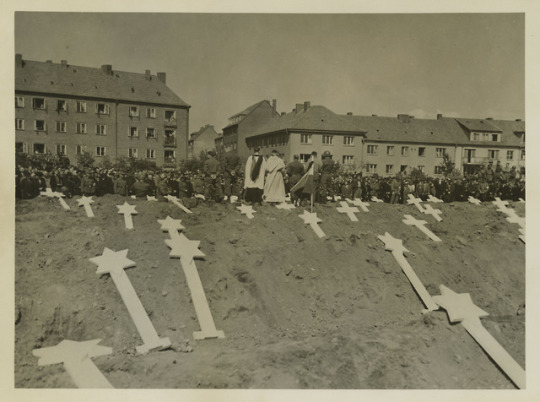
Markers for graves of 80 victims of Nazi brutality in the concentration camp at Ludwigslust. From Collection I-337.
Today, on Yom Hashoah, we remember the 6 million Jewish men, women, and children murdered in the Holocaust of European Jewry. We stand beside our professional peers across the United States, and the world, as they work to preserve the memory and truth of the Holocaust.
Further, we re-affirm David Myers’ statement, made as President and CEO of the Center for Jewish History, regarding the laws passed in Poland in February of this year:
“The Center for Jewish History regards with deep concern the new Holocaust bill passed by the Polish parliament and which President Andrzej Duda has signaled he will sign. The proposed law would make punishable by fine or imprisonment the assertion that ‘the Polish Nation or the Republic of Poland is responsible or co-responsible for Nazi crimes committed by the Third Reich.’ In taking this position, we recognize that it was Nazi Germany that established death camps on Polish soil--and that many Poles and the Polish nation at large suffered grievously under Nazism. At the same time, it cannot be denied that some Polish people were involved in the murder of Jews during (and after) the Second World War. To acknowledge that indisputable fact should not render one susceptible to a fine or imprisonment. The Center for Jewish History is committed to scholarly rigor, accuracy, and probity and calls on Poland’s Constitutional Tribunal to ensure that the new legislation not distort the sensitive historical record of the Second World War.”
268 notes
·
View notes
Link
Join us tomorrow night, Wednesday, April 11th at 7pm, as we host comics legend Neal Adams, Holocaust scholar Rafael Medoff, and comics historian Craig Yoe at We Spoke Out: Comic Books and the Holocaust for a look into how American comic artists and writers took on the political forces of the WW2 era.
In the Washington Post last year:
“Putting Adolf Hitler, a still-living world leader, on the cover of a comic book as the villain was definitely a daring and even dangerous move...Apart from Bundists and supporters of the Axis cause, there was a strong isolationist feeling in America.”
4 notes
·
View notes
Photo
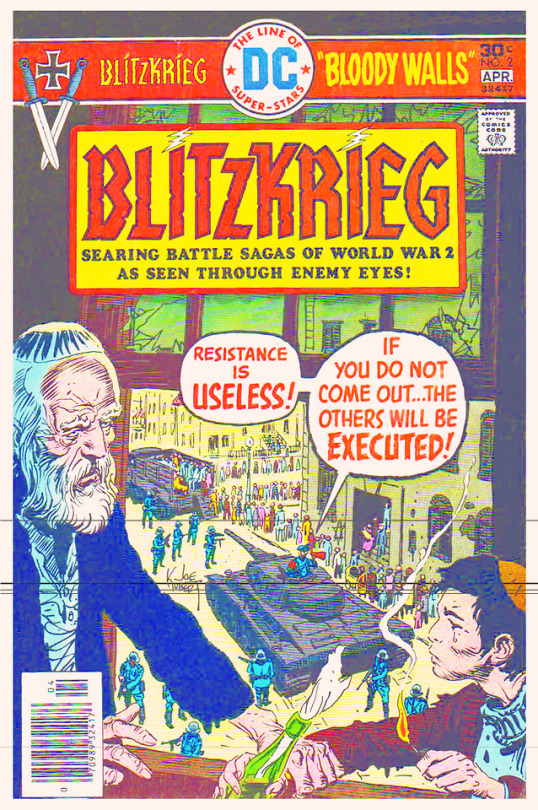

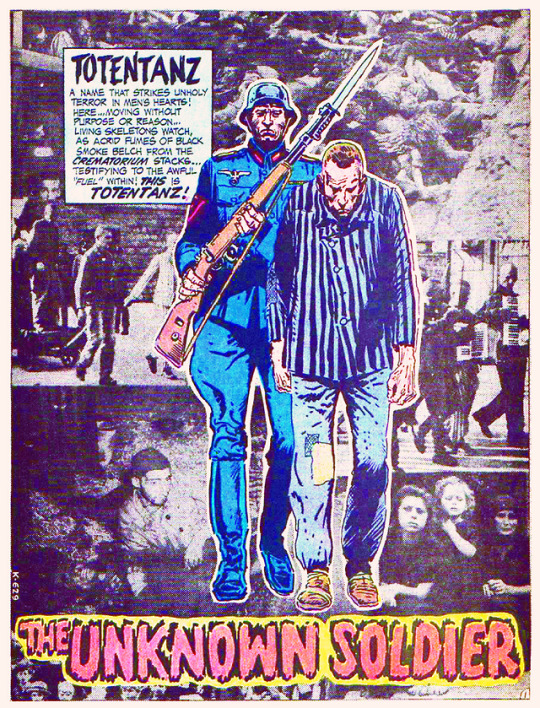


Some panels from We Spoke Out.
Learn More
11 notes
·
View notes
Text
We Spoke Out: Comic Books and the Holocaust
Long before the Holocaust was taught in schools or presented in films such as Schindler's List, the youth of America was learning about the Nazi genocide from Batman, the X-Men, Captain America, and Sgt. Rock.
In this talk, to be held on Wednesday, April 11, 2018 at 7pm, comics legend Neal Adams, Holocaust scholar Rafael Medoff, and comics historian Craig Yoe bring together a remarkable collection of comic book stories that introduced an entire generation to an engaging and important subject. We Spoke Out is an extraordinary journey into a compelling topic.
To commemorate Yom Hashoah as well as the upcoming Memorial Day, this program pays homage to the Jewish American heroes who fought with the US Army to defeat Nazism in WWII. AJHS is home to many collections detailing their life stories, such as the National Jewish Welfare Board, the Jewish War Veterans of the United States, the Louis H. Tankin World War II memoirs, the Milton Weillpapers, and many more.
90 notes
·
View notes
